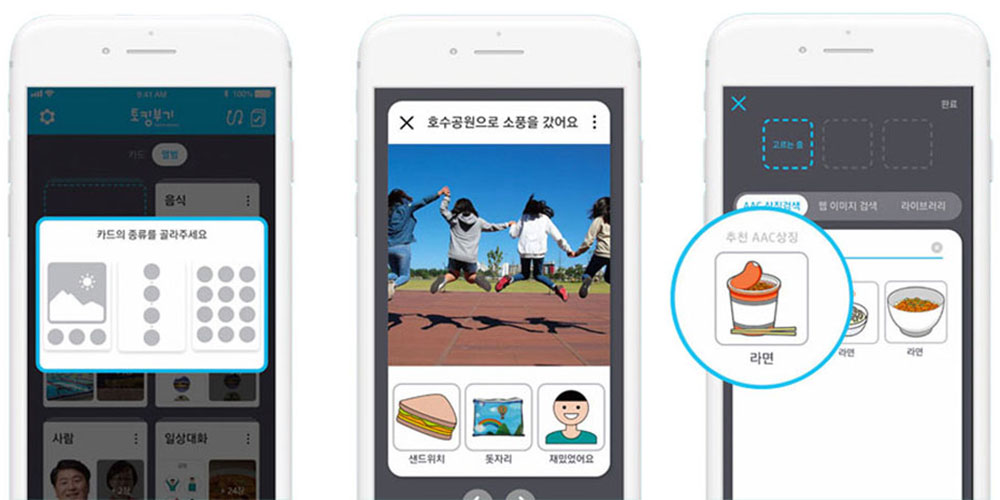TalkingBoogie: Collaborative Mobile AAC System for Non-verbal Children with Developmental Disabilities and Their Caregivers
Published in CHI 2020.
Honorable Mention Award
MIT
Samsung Research
SK Broadband

Abstract
Augmentative and alternative communication (AAC) technologies are widely used to help non-verbal children enable communication. For AAC-aided communication to be successful, caregivers should support children with consistent intervention strategies in various settings. As such, caregivers need to continuously observe and discuss children's AAC usage to create a shared understanding of these strategies. However, caregivers often find it challenging to effectively collaborate with one another due to a lack of family involvement and the unstructured process of collaboration. To address these issues, we present TalkingBoogie, which consists of two mobile apps: TalkingBoogie-AAC for caregiver-child communication, and TalkingBoogie-coach supporting caregiver collaboration. Working together, these applications provide contextualized layouts for symbol arrangement, scaffold the process of sharing and discussing observations, and induce caregivers' balanced participation. A two-week deployment study with four groups (N=11) found that TalkingBoogie helped increase mutual understanding of strategies and encourage balanced participation between caregivers with reduced cognitive loads.
Materials